Dark Energy: VISPA Particle Astrophysics
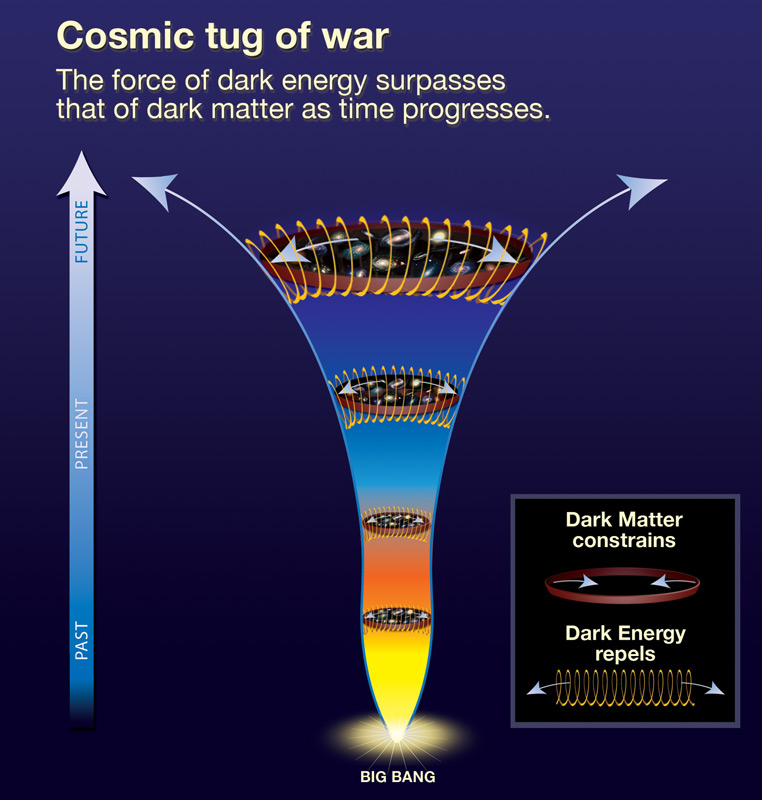
UVic is the founding leader of a 40-person international collaboration, called ALTAIR ("Airborne Laser for Telescopic Atmospheric Interference Reduction"), to eliminate the largest uncertainty in measurements of dark energy, as well as a major uncertainty in the search for gravitational waves from the instants just after the Big Bang.
Measurements of dark energy, the most precise of which use type Ia supernovae to measure the expansion history of our universe, are limited in their precision by photometric uncertainties -- how precisely and accurately one can measure the brightness (i.e. the magnitude) of the supernovae. Photometric calibration in astronomy has historically been performed using standard stars: stars whose magnitude and/or spectra have been calibrated 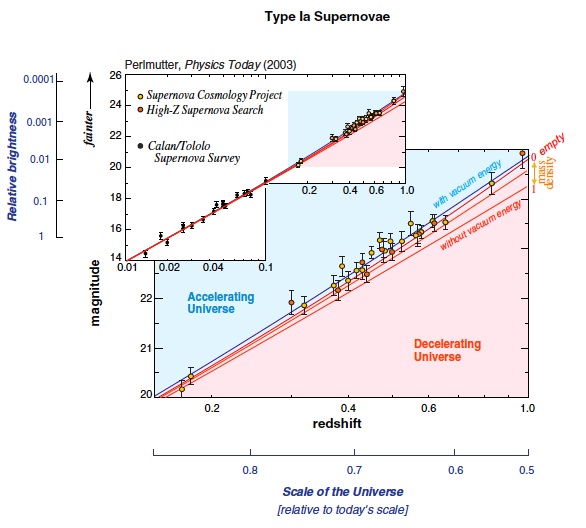 via either direct or indirect comparison with laboratory standards. This technique is fundamentally limited to precisions of order 1%, due to stellar variability and other uncertainties, whereas laboratory-based photometry and radiometry routinely obtain precisions of O(0.01%). The ALTAIR project is, thus, erasing this discrepancy, in order to understand what dark energy is, via present flights of precision-calibrated light sources in light (2.5 kg) payloads on balloons above the atmosphere (and later on [in ~2019] via a dedicated nanosatellite).
via either direct or indirect comparison with laboratory standards. This technique is fundamentally limited to precisions of order 1%, due to stellar variability and other uncertainties, whereas laboratory-based photometry and radiometry routinely obtain precisions of O(0.01%). The ALTAIR project is, thus, erasing this discrepancy, in order to understand what dark energy is, via present flights of precision-calibrated light sources in light (2.5 kg) payloads on balloons above the atmosphere (and later on [in ~2019] via a dedicated nanosatellite).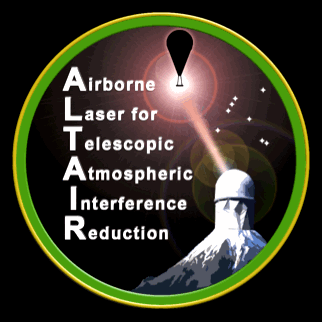
ALTAIR
ALTAIR uses the completely new technique of floating in-situ-calibrated light sources above astronomical observatories (such as Pan-STARRS on Mauna Kea in Hawaii, LSST in Chile and, in the microwave spectrum, the South Pole Telescope in Antarctica) to sharply reduce photometric (and, in the microwave spectrum, polarimetric) uncertainties by two orders of magnitude. In the optical spectrum, the light sources consist of thermally-controlled laser diode modules (presently at 440 [blue], 532 [green], 635, and 690 [red] nm wavelengths) output into an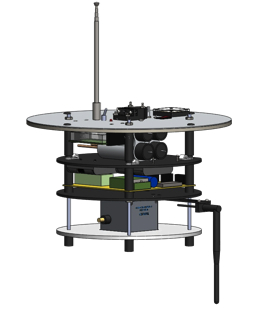 integrating sphere, and constantly monitored by a NIST-calibrated
integrating sphere, and constantly monitored by a NIST-calibrated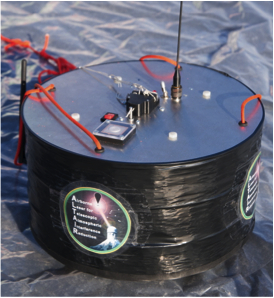 photodiode. In the microwave spectrum, our source is a Gunn diode. A 3D CAD model drawing and a photograph of our optical balloon payloads can be found on the left and right (click for larger pictures). Our initial microwave balloon payloads are presently being designed and constructed at the Univ. of Toronto.
photodiode. In the microwave spectrum, our source is a Gunn diode. A 3D CAD model drawing and a photograph of our optical balloon payloads can be found on the left and right (click for larger pictures). Our initial microwave balloon payloads are presently being designed and constructed at the Univ. of Toronto. 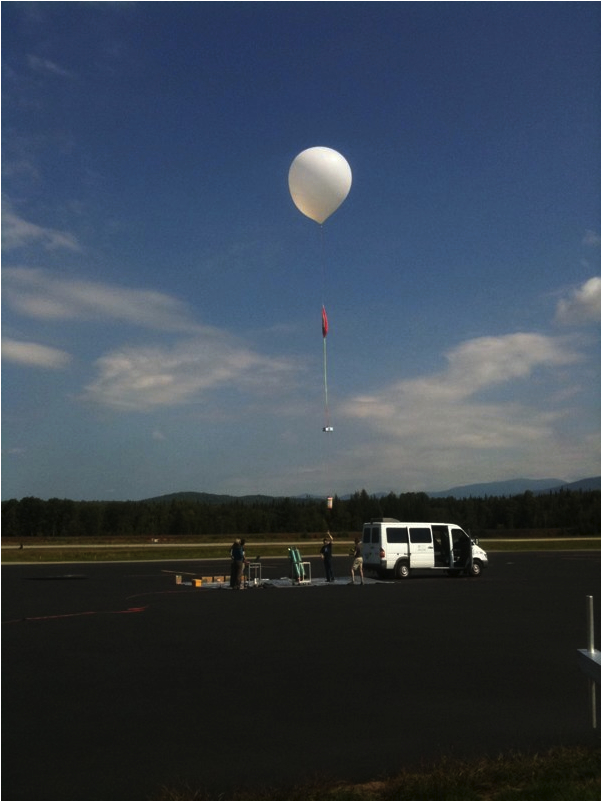 We regularly launch and perform observations of our payloads: our primary flight facility is in New Hampshire, and we will also be beginning flights over Mt. Hopkins in Arizona in January 2013, over Pan-STARRS in late 2013 and early 2014, and over LSST in early 2015. UVic's instrumentation responsibilities include the optical payload sources: we have designed, constructed, and flown the initial sources, and,
We regularly launch and perform observations of our payloads: our primary flight facility is in New Hampshire, and we will also be beginning flights over Mt. Hopkins in Arizona in January 2013, over Pan-STARRS in late 2013 and early 2014, and over LSST in early 2015. UVic's instrumentation responsibilities include the optical payload sources: we have designed, constructed, and flown the initial sources, and, 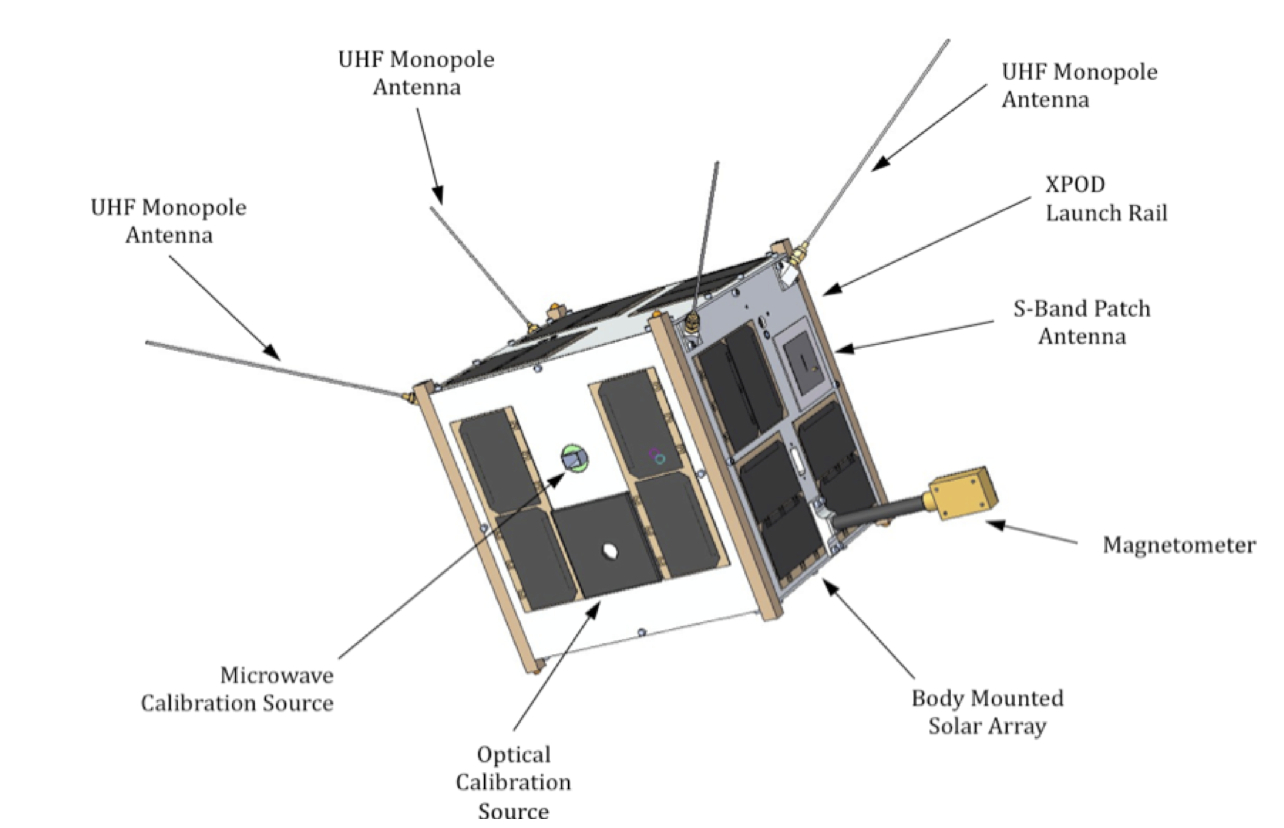 together with NRC-INMS in Ottawa and NIST in Maryland, will be performing precise laboratory calibration of source optical output properties in 2013-2015.
together with NRC-INMS in Ottawa and NIST in Maryland, will be performing precise laboratory calibration of source optical output properties in 2013-2015.
Faculty:
Postdoctoral fellow:
- Karun Thanjavur (starting Feb. 1, 2013)
Graduate student:
- being hired! -- let us know if you are interested!
Undergraduates:
- Spencer Bialek
- James Hartwick
- Kevin Hildebrand
- Nikita Kuklev
- Zhuoni Qian
- ... please let us know if you are interested!
- "Satellite-Mounted Light Sources as Photometric Calibration Standards for Ground-Based Telescopes," J. Albert, Astronomical Journal 143, 8 (2012)
- "Precision Calibration via Artificial Light Sources Above the Atmosphere," J. Albert, M. Fagin, Y. Brown et al, Astro. Soc. Pacific conference series (2012)
- "Satellite-Mounted Light Sources as Photometric Calibration Standards," J. Albert, K. Foster, J. Battat et al, white paper for the National Academy of Sciences ASTRO2010 Decadal Survey
- "Telescope Spectrophotomtric and Absolute Flux Calibration, and National Security Applications, Using a Tunable Laser on a Satellite," J. Albert, W. Burgett, and J. Rhodes, arXiv:astro-ph/0604339
- "Precision Photometry via Man-made Light Sources, for Optical and for Microwave Astronomy," J. Albert, Fermilab, 16 Apr. 2012
- "A Balloon-Borne Light Source for Precision Photometric Calibration," M. Fagin, Fermilab, 16 Apr. 2012
- "Addressing the photometric calibration challenge: explicit determination of the instrumental response and atmospheric transmission functions," C. Stubbs, Fermilab, 16 Apr. 2012
- "Dark Energy: Nature's Heart of Darkness," J. Albert, UVic, 2 Feb. 2011
